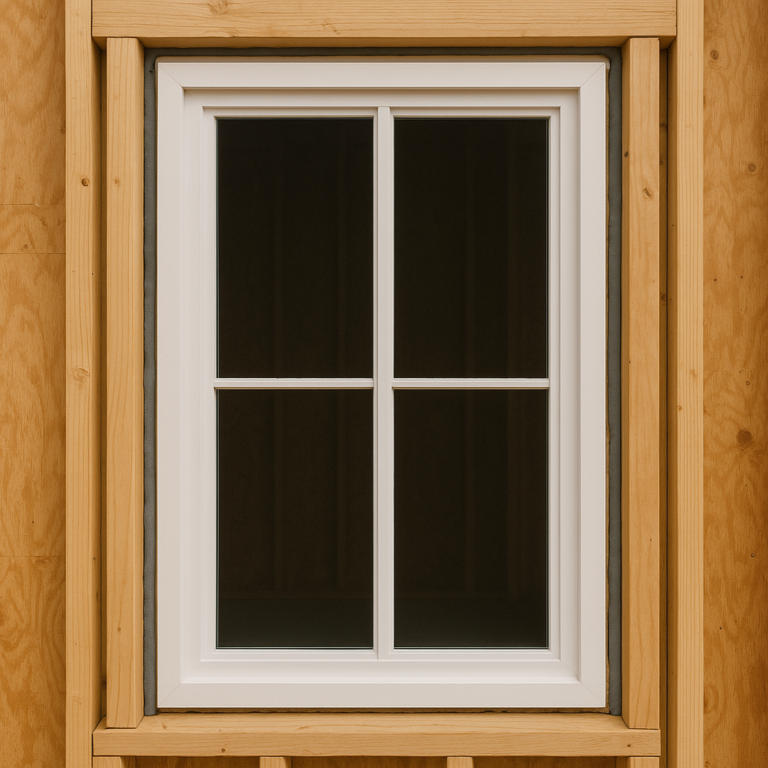Welcome To
Alpine Energy Solutions
Alpine Energy Solutions is your trusted, certified building energy professional. Using top-of-the-line specialty equipment, we provide testing and consulting services for both residential and commercial buildings—ensuring code compliance, improved performance, and energy efficiency. Providing blower door and duct leakage testing in Salida, Buena Vista, Poncha Springs, Gunnison, Crested Butte, Nathrop, and throughout Chaffee, Lake, Gunnison and Fremont Counties, Colorado.
Purpose of Testing
Air and duct leaks in a building can
O1
O2
O3
O4
O5
O6
Benefits of a Blower Door Test
These are some reasons for establishing the proper building tightness
- Reducing energy consumption from excess air leakage
- Avoiding moisture condensation problems
- Avoiding uncomfortable drafts caused by cold or warm air leaking in from outside
- Controlling outdoor contaminants, pests, and odors from entering your home.
- Ensuring proper sizing and airflow requirements for HVAC systems
- Determining whether mechanical ventilation is needed to maintain healthy indoor air quality
- Verifying compliance with energy codes and building regulations
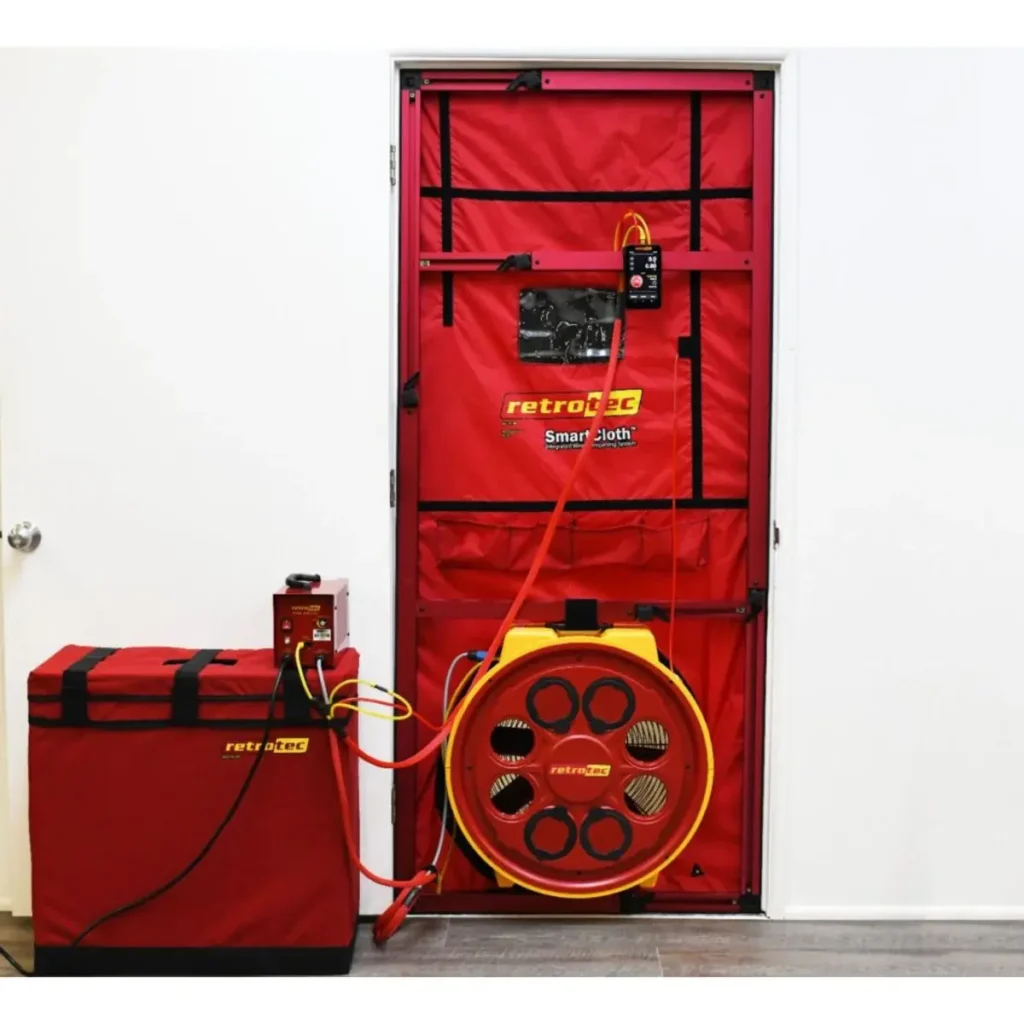
Services
Serving all of Chaffee County
At Alpine Energy Solutions, we specialize in comprehensive blower door and duct leakage testing to ensure your building operates at peak efficiency.
Blower Door Testing
Our blower door testing service identifies air leaks in your building’s envelope—helping improve energy efficiency, enhance indoor air quality, and ensure code compliance. Using state-of-the-art equipment, we measure the airtightness of your home or commercial property and provide detailed reports with actionable recommendations to seal leaks and reduce energy loss.
Duct Leakage Testing
Leaky ducts can significantly affect your building’s energy performance. Our duct leakage testing service accurately measures air loss within your ductwork, helping identify and address inefficiencies. Sealing these leaks can improve HVAC system performance, lower energy bills, and increase overall comfort.
Our team at Alpine Energy Solutions is committed to helping you create a more energy-efficient and comfortable indoor environment. Whether you’re building new or improving an existing structure, our expert testing services give you the insights needed for optimal performance.
Proudly serving all of Chaffee, Lake, Fremont, and Gunnison County, including Salida, Buena Vista, Poncha Springs, Nathrop, Gunnison, and Crested Butte. Contact us today to learn more about our services and schedule your testing!
FAQ
Frequently Asked Questions
- Blower Doors
- Preparing for a Blower Door Test
- Purpose of Duct Leakage Test
- Purpose of Duct Leakage Test
- Helpful hints to pass your Duct Leakage Test
- BPI Certified for Infiltration and Duct Leakage
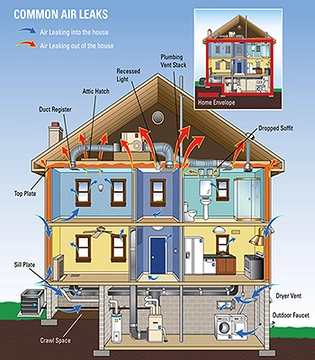
Alpine Energy Solutions provides blower door and duct leakage testing services throughout Central Colorado. We proudly serve Salida, Buena Vista, Poncha Springs, Nathrop, Gunnison, Crested Butte and all of Chaffee, Lake, Fremont, Gunnison County.
Whether you’re a homeowner, builder, or code official, we’re here to help ensure your project meets energy code requirements and performs efficiently.
A blower door test is used to measure a building’s airtightness and identify air leakage points. It helps determine how much air is entering or escaping the building, which is critical for evaluating energy efficiency. The results can guide improvements to insulation, reduce energy waste, and enhance indoor air quality.
A blower door consists of a powerful fan temporarily mounted in an exterior doorway. The fan pulls air out of the home, creating a slight vacuum. As a result, higher outside air pressure forces air through unsealed gaps, cracks, and openings. A manometer measures this airflow to calculate the air infiltration rate—typically reported in air changes per hour (ACH).
While the test is underway, Alpine Energy Solutions (AES) may use an infrared camera to inspect walls, ceilings, and floors, helping pinpoint areas where insulation is missing or air is leaking.
Blower door tests can be conducted during construction or renovation to:
Measure baseline leakage before air-sealing work begins
Verify improvements after air-sealing has been completed
Blower door testing is a vital part of energy audits and is often required for code compliance in modern building standards. It ensures buildings meet energy performance goals for both comfort and efficiency.
Preparing for a blower door test involves several steps to ensure accurate results and to protect your property during the test.
AES will perform the blower door test, including a walk-through of your home, setting up the blower door, and conducting the test. The following steps will help prepare your home for a blower door test:
1. Plan to do a walk-through of your home with AES. Be prepared to point out areas that you know are drafty or difficult to condition comfortably.
2. Expect AES to request access to all areas of your home including closets, built-in cabinets, attics, crawl spaces, and any unused rooms.
3. To prepare for the blower door test, AES will close all exterior doors and windows and open all interior doors. This ensures that air isn’t drawn in through unintended pathways and that the entire interior space is included in the test.
4. If you heat with wood, be sure all fires are completely out and remove any ashes from open fireplaces.
5. Turn off heating, ventilation, and air conditioning (HVAC) systems, exhaust fans, and combustion appliances like gas water heaters, furnaces, and fireplaces to prevent damage and ensure safety.
A duct leakage test is designed to measure the airtightness of the ductwork in a heating, ventilation, and air conditioning (HVAC) system. The purpose of this test is to identify leaks in the ductwork that can lead to energy losses, reduced system efficiency, and compromised indoor air quality.
Similar to a blower door, a duct leakage test utilizes a fan to pull a vacuum pressure on all supply and return ductwork. The amount of air required for the vacuum pressure is then used in the calculation to determine a percent leakage rate. As with the blower door test, a duct leakage test is a requirement for most new construction.
Per the 2021 IECC, ducts shall be pressure tested by either a Rough-in test or a Final test. It is recommended to perform this test during the rough-in stage, as all ductwork will be easily accessible if further sealant needs to be installed for passing results
AES will seal off all of the return and supply registers in the building and install a fan to de-pressurize the ductwork system. The sealing of registers is accomplished by using a specialty tape, similar to saran wrap. The fan is then sealed to the air handler or large return opening and the test can commence.
Per the 2021 IECC, for the blower door, a passing test concludes that the building has less than or equal to 3 air changes per hour (Climate Zones 3 through 8).
For the duct leakage test, during rough-in, a passing test concludes that the total leakage is less than or equal to 4 cubic feet per minute per 100 square feet of conditioned floor area. If the air handler is not installed at the time of the test, the total leakage shall be less than or equal to 3 cubic feet per minute per 100 square feet of conditioned floor area.
If the duct leakage test is performed postconstruction, total leakage shall be less than or equal to 4 cubic feet per minute per 100 square feet of conditioned floor area.
When all ducts and air handlers are located entirely within the building thermal envelope, a passing test concludes total leakage to be less than or equal to 8 cubic feet per minute per 100 square feet of conditioned floor area.
If this is your first test, always have it performed at the rough-in stage so that issues can be easily addressed. Passing a duct leakage test involves ensuring that your ductwork is as airtight as possible. Here are some helpful hints to prepare for and pass your duct leakage test:
- Inspect Ductwork: Before the test, thoroughly inspect all ductwork for visible signs of damage, gaps, or poorly connected joints. Pay special attention to areas where ducts connect to vents, registers, and the HVAC unit.
- Liquid Mastic or “pookie” has shown the best results for sealing any type of joint.
- Seal every joint. The test is very sensitive, so the HVAC professional may need to seal quite a bit more than normal.
- The furnace or air handler is often overlooked. Seal around the edges and around the back side of the handler where the returns connect.
- Flex duct is popular in attics. However, the zip ties conjoining them to the system have a tendency to leak. Add mastic to these joints as well to create a tight seal.
- Make sure the filter cover is fully installed and sealed before the test.
It can be helpful for the HVAC installer to be present during the inspection to help identify and repair leaks on the spot.
Blog
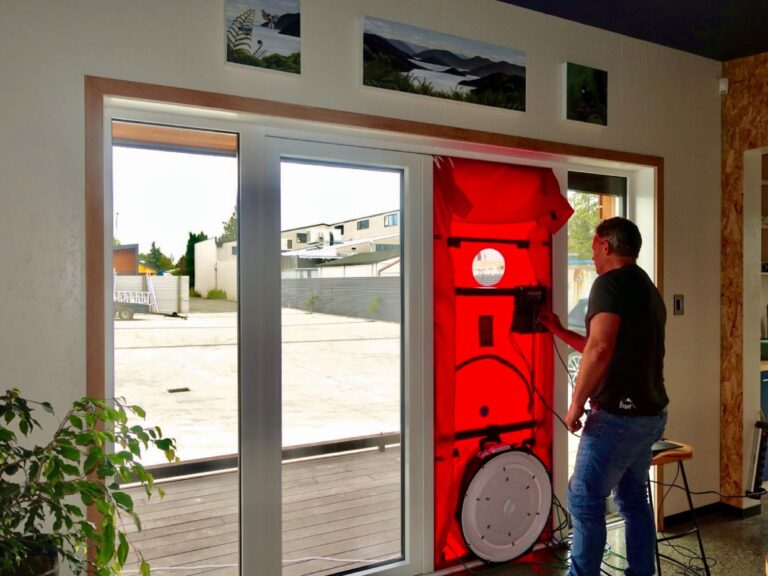

About Us
Who we Are?
Based in Salida, Colorado, Alpine Energy Solutions is your local building energy professional. We strive to assist builders and homeowners in understanding the energy efficiency of their buildings and how to improve it. With decades of building experience, we offer services such as blower door and duct leakage tests which can be used for code compliance, energy audits, insulation assessments, and HVAC system evaluations.
Our goal is to help you achieve cost savings, increased comfort, and a reduced environmental impact. Whether you’re working on new construction or looking to make your existing building more efficient, we are here to help.
Join our satisfied clients who have benefited from our expertise. Contact us today for a consultation and start your journey towards a more efficient building!
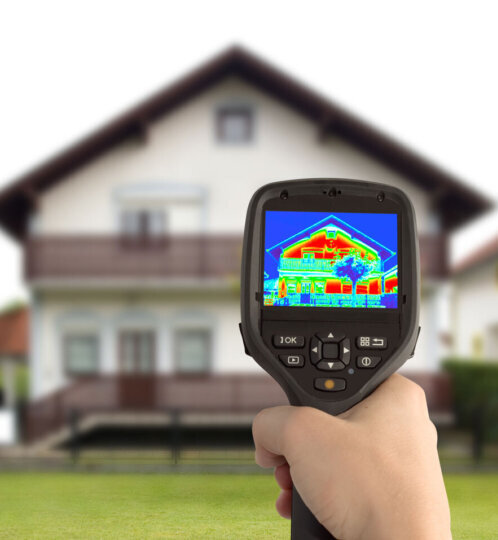
Blower door and duct leakage testing is required for 2021 IECC Code Compliance on all new construction and certain renovations.
Providing blower door and duct leakage testing in Salida, Buena Vista, Poncha Springs, Nathrop, Gunnison, Crested Butte and throughout Chaffee, Lake, Fremont, and Gunnison Counties, Colorado.

